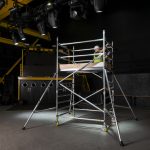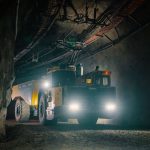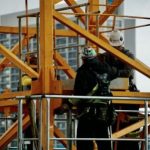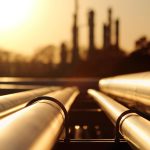Tim Turney, Technical Product Manager at Casella, explains how employers can demonstrate to workers that they are doing all they can to ensure that their working environment is safe and their hearing protected through a dedicated noise monitoring initiative.
Some 17,000 people in the UK suffer deafness, ringing in the ears or other conditions caused by excessive noise at work. According to the Health and Safety Executive (HSE), noise induced hearing loss accounts for approximately 75 per cent of all occupational disease claims, across all industry sectors. Food and drink manufacturing is one such sector, and an important one because it accounts for approximately 15 per cent of all manufacturing jobs and 15 per cent of its output by value. The food and drink manufacturing sector comprises over 30 different industries with many diverse processes that can create high noise environments, which could exceed the levels at which employers are required to take action under the Control of Noise at Work Regulations 2005.
So, as an employer, how can you demonstrate to workers that you are doing all you can to ensure that their working environment is safe and their hearing protected through a dedicated noise monitoring initiative?
Employer responsibility
If noise exposure reaches a level of 80 dBA, risk to worker health must be assessed, and individuals provided with appropriate information and training. The level at which employers must provide hearing protection and mandatory hearing protection zones is 85 dBA over an (8-hour) daily or 40-hour) weekly average exposure. Taking into account any reduction in exposure that hearing protection can provide, workers must not be exposed over 87 dBA.
The HSE reports noise as one of the main health issues across the food and drink sector, with average noise levels varying between 85-95 dBA in the bakery, dairy and confectionary industries and up to 100 dBA in the milling, drink production and meat industry.
Many companies rely on specialist consultants to monitor noise but increasingly health and safety professionals are bringing this capability in-house in order to be more proactive and alleviate worker concerns as quickly as possible. Being able to clearly demonstrate that noise levels are well within exposure limits through accurate data is vital. Staff operating on the shop floor often want reassurance that the jobs they are doing and the environment they are working in is not potentially damaging their hearing. Noisy processes include homogenisation, bottling lines, blast chillers and pneumatics and also the cleaning in place (CIP) process, where stainless steel vessels are cleaned using tens of thousands of litres of water.
The National Institute for Health and Care Excellence (NICE) explain that promoting a culture that improves the health and wellbeing of employees is good management and leads to healthy and productive workplaces. Increased productivity is the number one priority for most businesses.
Monitoring solutions
Measuring noise exposure doesn’t have to take a lot of time, or cost the business a lot of money through the use of external resources. A successful noise monitoring programme can be carried out on-site by trained health and safety managers, using either a sound level meter or a noise dosimeter.
Sound level meters
A sound level meter is a hand-held device, ideal for short term measurements. When using a sound level meter, measurements must be started at the beginning of a task, representing workers’ actual exposure. This process should be repeated for both ears, for all duties employees perform, making it possible to calculate an accurate record of daily exposure.
If individual working patterns are complex, or if the work carried out means it is not practical or safe to conduct noise monitoring with a sound level meter, dosimeters can be used. These are small, shoulder worn devices that will collect individual exposure data.
Dosimeters
Dosimeters are ideal for personal exposure monitoring and can be worn by employees for their entire working shift. Data is instantly recorded and can be downloaded to detail the time history of the noise exposure, highlighting where high exposures occur throughout the day. Workers can also log the times of jobs performed, allowing the employer to instantly see the operations that require more effective noise controls.
Modern noise dosimeters can also record the actual audio, allowing the sound to be played back to determine the basis of the noise exposure, i.e. if it was from a particular machine.
Monitoring solutions enable employers to identify heightened noise areas in the working environment and the different tasks that could also lead to increased levels. Noise monitoring provides concrete data, highlighting key paths for change. Ensuring workers operate without excessive exposure to noise is imperative to the welfare of its workers and the company’s overall success.
Casella is dedicated to reducing occupational health and environmental risks, and supporting businesses solve their monitoring and analysis needs. For more information about Casella monitoring solutions and noise monitoring courses call the UK office on +44 (0) 1234 844100, email info@casellasolutions.com or visit www.casellasolutions.com




